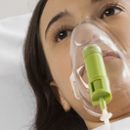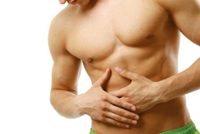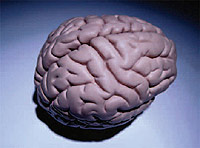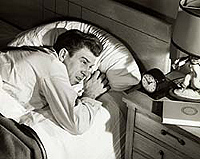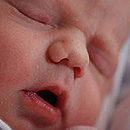What is hyperkinesia? What are they are? Answers to these and other questions about hyperkinases you will find in this article.
Content
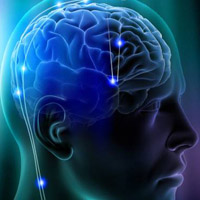 What is common between Ikota, teak and unwitted shudders of the body at the time of falling asleep? It turns out that all these phenomena has the overall nature of the failure of the system controlling the muscular apparatus.
What is common between Ikota, teak and unwitted shudders of the body at the time of falling asleep? It turns out that all these phenomena has the overall nature of the failure of the system controlling the muscular apparatus.
Involuntary movements are not always meaningless, as in cases with tick. Suppose, pulling out your hands from a hot iron - a very useful uncontrollable reaction. It takes place on the team of special nerve cells - motioneons. Thanks to this unconditional reflex, we manage to avoid burn.
What can be explained by the irrepressible trembling in the knees or more noticeable motor activity?
Any meaningful motor activity is headed by brain bark. It is here that the motivation arises to the action, which in nervous fibers goes into the spinal cord, from where the pulses of the muscles are sent. Maintain the center of gravity of the body and coordinate movements, not particularly thinking, we can thanks to the cerebellum. And for the muscular tone, the rhythm and smoothness of movements correspond to the subcortical cores of the brain. Thanks to them, we are capable of a variety of actions - running, jumping, dance pas. The wealth of emotional reactions (crying, laughter, facial expansion) is also the scope of activities of subcortical nuclei.
Violations in the work of this complex system and are manifested by all sorts of involuntary: movements. Such excessive activity is called hyperkinosis in medicine. For such a state, the weakening of the tone of muscles in combination with violent senseless movements and muscle spasms.
Types of hyperkinesov
What manifestations of obsessive motor activity are most often?
If under certain conditions you will try to stretch your hands forward, they will shudder slightly. Remember both O «nervous tremory», which occurs during fatigue, stress, disturbing states, excitation. This is tremor. This reaction is characteristic of most healthy people. Tremor is found, caused by the shoes of the cerebellum. It is characteristic of a shiver in his hand or leg when they are approaching the target target. Sometimes a shiver begins while maintaining a certain posew or holding severity. For example, severe head and enclosures appear in the standing position and disappears, if you lie. In tremor «fighting wings» man becomes like a bird that is trying to take off.
Another version of involuntary motor activity, familiar to the majority of us, - Mioclonia. This is an instant reduction in one muscle or muscle group. Night shuddering when falling asleep, ordinary idiot - also manifestations of myoclonia. By the way, the latter occurs with an involuntary reduction of the muscles of the diaphragm.
Perhaps the most common type of uncontrolled activity can be called tick - short, sharp and usually repeated shudders of the head, body, face muscles, hands or feet. Simple tick, such as involuntary blink, often appears in childhood and sometimes perceived by others as nervousness and manners. As a rule, he passes by itself when the child becomes a teenager.
However, it happens that with age, motor disorders are exacerbated. This happens when turrette syndrome, when Tick begins to imitate more complex movements and is accompanied by obsessive utterance of the same type of sounds or words. Vocal TIK can manifest themselves or grunting sounds that may be aggravated and uncontrolled foul language.
Khorora - Fast Chaotic Movements. Sometimes they are imperceptibly embedded in meaningful actions. Chorea Genton, which has a hereditary nature manifests itself «twigging» Hand and leg movements, comical «Dancing» Gait, involuntary grimers. It happens that a person loses the ability to keep one or another posture, for example, sitting, shifting her knees. He is found and the Korea of pregnant women developing in the first half of pregnancy.
Cross-shaped movements of brushes and stops with shifts are characteristic of athetosis. In the hemiballeism, a person performs involuntary thrifty or rotational «Fallen» one hand, less often -. Sometimes all this is accompanied by the movements of the mouth.
There are also such impaired muscle tone, which cause a person to take some unnatural pose interfering with normal motor activity. Muscular dystonia can spread to the whole body or based in separate muscle groups. For example, torsion dystonia is manifested by slow, corkscrew drives. A spastic curve is accompanied by a slope or twist of the head in one direction. Obsessive blinking, grimaces with the movement of the lower jaw occasionally when blephaline. And finally, professional dystonia arise on the soil of any monotonous working movements.
To get rid of unpleasant obsessive movements, it is necessary to identify their true root cause, to which treatment should be directed. It is often not to do without prolonged reception of drugs affecting the activity of the system that controls the muscular apparatus. Unfortunately, such medicines have a lot of side effects: cause drowsiness, stiffness, allergic reactions, reduction of blood pressure. This, naturally, makes it difficult to recover. In difficult cases, they resort to neurosurgical treatment methods.


